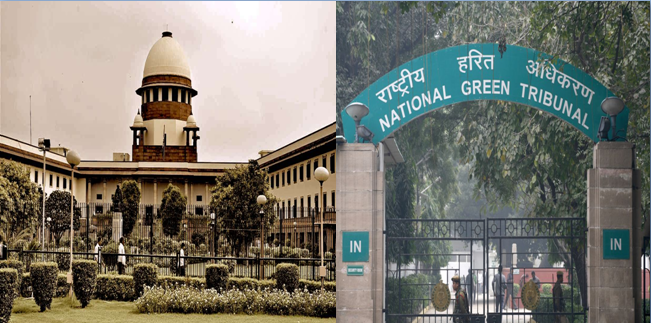A Supreme Court bench headed by Justice A M Khanwilkar, on Wednesday, ordered that the appointment orders will be issued to the current judicial and technical members of the National Green Tribunal (NGT). The bench stated that the hearing on the matter stands deferred for four weeks with a hope that appropriate decision including appointment orders will be issued regarding the present members of the NGT. Justice A M Khanwilkar underlined that the order is placed before the Secretary, Ministry of Environment, Forest and Climate Change, (MOEFCC) for information and necessary action and he asked to submit a compliance report to the SCI before the next date of hearing.
With reference to Appointments Committee of the Cabinet (ACC) the SCI noted, “We are informed by the learned Additional Solicitor General that keeping in mind the observations made by this Court in its order dated July 23, 2020 and reiterated on August 14, 2020, the proposals regarding the appointment of judicial as well as technical members are now forwarded after due compliances to the Appointments Committee of the Cabinet (ACC), who has authority to take a final decision thereon.”
The Apex court bench stated that they have no doubt that the authorities would act swiftly in the matters of the appointments. The Bench also highlighted its concern that the NGT is running at less than the minimum statutory strength provided for it.
What is NGT
The National Green Tribunal was established on October 18, 2010 under the National Green Tribunal Act 2010. It was established for effective and expeditious disposal of cases pertaining to environmental protection and conservation of forests and other natural resources. It also acts on the enforcement of any of the legal rights relating to environment, giving relief and compensation for damages to persons and property and for matters connected therewith or incidental thereto.
It is a specialized body equipped with the necessary expertise to handle environmental disputes involving multi-disciplinary issues. Under Section 19 of the National Green Tribunal Act, 2010 the Tribunal is empowered to regulate its own procedure. Additionally, the Tribunal is not bound by the procedure under the Code of Civil Procedure, 1908 or the Indian Evidence Act, 1872, and is guided by the principles of natural justice. However, the Tribunal is vested with the powers of a civil court under the Code of Civil Procedure for discharging its functions.
With the establishment of the NGT, India had become the third country in the world to set up a specialized environmental tribunal, only after Australia and New Zealand, and the first developing country to do so.
Structure
NGT comprises of the Chairperson, the Judicial Members, and Expert Members. They shall hold office for a term of five years and are not eligible for reappointment. The Chairperson is appointed by the Central Government in consultation with Chief Justice of India (CJI). A Selection Committee shall be formed by the central government to appoint the Judicial Members and Expert Members. This committee is generally identified with the Appointments Committee of the Cabinet. There are to be least 10 and maximum 20 full time Judicial members and Expert Members in the tribunal.
Functions
The Tribunal is mandated to work for disposal of applications or appeals within 6 months of filing of the same. Initially, the NGT was proposed to be set up at five places of sittings. It follows circuit procedure for making itself more accessible. New Delhi is the Principal Place of Sitting of the Tribunal and Bhopal, Pune, Kolkata, and Chennai are the other four places of sitting of the Tribunal.
NGT generally entertains petitions which bring to light instances of substantial environmental damage. A valid complaint is taken note of even in the absence of any representation from the aggrieved party and can be filed even without an advocate.
The author is a student member of Amity center of Happiness





